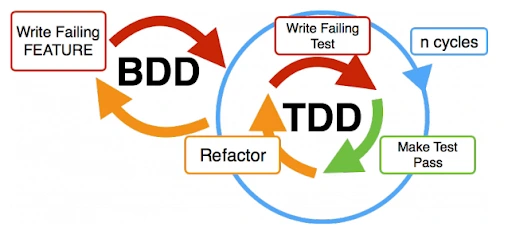Code Coverage,
A software testing metric termed “code coverage” counts the number of lines of code successfully validated under a test method, which aids in evaluating how thoroughly a piece of software is checked.
Any software company’s ultimate objective is to provide enterprise-grade software. To achieve this objective, however, businesses must make sure that the software they create satisfies all prerequisite quality requirements, including accuracy, dependability, effectiveness, security, and maintainability. Only by carefully evaluating the software package is this even conceivable.
Analysis, monitoring, and measurement of test operations are essential in addition to giving the program to the QA engineers for problem tracking. This means that measurements for software testing should be taken into account while assessing the efficiency and comprehensiveness of the test suite.
 One such software testing statistic that can be used to evaluate the test performance and quality features of any product is code coverage.
One such software testing statistic that can be used to evaluate the test performance and quality features of any product is code coverage.
The development and QA teams will profit from such an understanding. This measure can aid developers in finding and removing dead code. On the other hand, checking overlooked or hidden test cases might benefit QA. They may monitor the source code’s health and quality while paying more attention to the sections that aren’t being recorded.
The percentage of code covered by automated testing is measured by code coverage, also known as test coverage.
Automated tests cover the more code, the less time your developers and QA analysts will need to spend manually testing the app, therefore tracking this KPI is crucial.
The tests also ensure that previously functional portions of the code don’t break without warning due to fresh updates to the source.
How is it measured?
Simply use the following formula to compute the code coverage percentage:
Code Coverage Percentage = (Number of lines of code executed by a testing algorithm/Total number of lines of code in a system component) * 100.
Test Driven Development,
To achieve maximum code coverage, TDD is a software development methodology that prioritizes the production of unit test cases before the development of actual code or
In plain English, Test Driven Development (TDD) is a software development methodology that emphasizes the creation of unit test cases before writing actual code. It is an iterative process that includes refactoring, unit testing, and programming.
The Agile manifesto and Extreme programming are the ancestors of the TDD methodology. The test process, as the name implies, directs software development. Additionally, it’s a structural technique that gives developers and testers access to optimized code that proves durable over time.
With TDD, developers begin by drafting brief test cases for each feature based on their preliminary comprehension. The main goal of this strategy is to only alter or create new code when the tests are unsuccessful. As a result, test script duplication is avoided.
The quick response is that it is the most straightforward technique to produce high-quality code and adequate test coverage.
Three phases of Test Driven Development
 Develop precise tests : To confirm the functionality of certain features, developers must develop accurate unit tests. For the test to run, they must make sure that it compiles. The test is almost always going to fail. Developers are building concise tests based on their expectations of how the feature will operate. Therefore, this failure has significant implications.
Develop precise tests : To confirm the functionality of certain features, developers must develop accurate unit tests. For the test to run, they must make sure that it compiles. The test is almost always going to fail. Developers are building concise tests based on their expectations of how the feature will operate. Therefore, this failure has significant implications.
Updating the Code : After a test fails, developers must make the bare minimum changes necessary to the code in order to make it run properly the next time it is executed.
Refactor the Code : Once the test has passed, look for duplication or potential code improvements to improve overall efficiency. Make sure that the refactoring has no impact on the program’s external behavior.
What role does TDD play in Agile development?
The project requirements are likely to vary during the development sprint cycle. To cope with this and produce solutions aligned with the customer’s changing needs, teams require frequent input to prevent delivering unsuitable software. TDD is designed to provide such feedback early on.
TDD’s test-first strategy also aids in the elimination of significant bottlenecks that impede software quality and delivery. The system evolves based on continual input, issue corrections, and the inclusion of new features to guarantee that everything functions as it should. TDD improves communication among team members from the development and QA teams and the customer. Furthermore, because the tests are pre-created, teams do not have to waste time developing lengthy test scripts.
Tools that are used to perform TDD, Mockito, Mocha, Jest, TestNg, Junit, pyTest, xUnit,
Test Driven Development vs Behavior Driven Development
TDD is concerned with testing smaller portions of functionality in isolation, whereas BDD is concerned with evaluating an application’s behavior from the end user’s perspective. The TDD test asserts the outcome of a single method, whereas the BDD test is solely concerned with the outcome of a higher-level scenario.
BDD includes product managers, developers, and test engineers working together to provide tangible examples of desirable functionality. Before any implementation, there is a high degree of communication. On the other hand, TDD may be completed by a single developer without the involvement of product managers or stakeholders.

What is BDD (Behavior-Driven Development) and how does it work?
Behavior-driven development requires executing behavior-specific tests or functional requirements that outline the program’s executable situations. The following is included in this:
creating user stories that directly connect application functionality to business objectives by employing the 5 Whys method or the if-then scenario.
Tools that used to perform BDD : Serenity BDD , Cucumber , JBehave , Specflow
Why is BDD Used?
A user’s expected behavior when interacting with an application is recorded and produced as part of the BDD (Behavior Driven Development) method of agile software development. By encouraging developers to concentrate solely on the desired behaviors of an app or program, BDD helps to decrease bloat, superfluous code, unnecessary features, and lack of focus. Testing for acceptability and test-driven development (TDD) are combined, improved, and integrated using this method.
In order to build a general understanding of how a product is meant to operate, a typical behavior-driven development project would start with a conversation comprising developers, management, and the customer. The product’s behavior expectations are then used to inform the developers’ aims. Once all behavior tests are successful, the product is deemed to have met its requirements and is prepared to be delivered to the client.
With BDD, you can involve end users and business stakeholders who might not have much software development expertise in the pool of input and feedback. Development teams may find it easier to deploy BDD in continuous integration and delivery scenarios due to the expanded feedback loop.
Recent Blog

How to have a happy, motivated and engaged team? (Part I)
There is no one magic formula really. Press this button and you…

How to have a happy, motivated and engaged team? (Part II)
People need to have their hard work, contribution to the team and…

The Lockdown Guide: Success through EQ
The global pandemic, COVID-19, came into our existence back in 2019 and…

